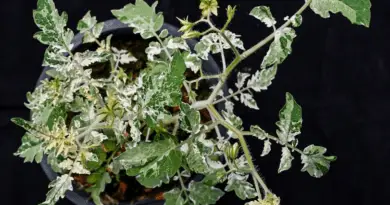Fungus Makeover: CRISPR’s Role in Better Eating

A recent study published in Nature Communications by researchers from the University of California, Berkeley, unveils innovative advancements in synthetic biology. The team focuses on bioengineering edible mycelium, specifically the fungus Aspergillus oryzae, to enhance its nutritional value and sensory appeal as a sustainable food source. This work represents a significant step toward developing efficient and environmentally friendly alternatives to traditional animal-based foods.
CRISPR-Cas9 Toolkit for Genetic Modification
The researchers developed a comprehensive toolkit utilizing CRISPR-Cas9 technology for precise genetic modification of A. oryzae. CRISPR-Cas9 is a revolutionary gene-editing method that allows scientists to make targeted changes to an organism’s DNA. The team identified and used neutral loci within the fungus’s genome—areas where new genes can be inserted without disrupting normal growth or function. This strategy enabled the efficient expression of introduced genes, paving the way for significant enhancements in the fungus’s properties.
Enhancements in Nutritional and Sensory Properties
One of the standout achievements of this study is the increased production of:
- Ergothioneine: A powerful antioxidant that supports cellular health and may offer various health benefits.
- Heme: An iron-containing compound that gives blood and meat their red color and contributes to their flavor.
By engineering A. oryzae to overproduce these compounds, the researchers enhanced both the nutritional value and the taste profile of the fungal biomass. Remarkably, the engineered strains produced ergothioneine levels higher than those found in oyster mushrooms, which are known for their high ergothioneine content. The elevated heme levels contribute to a meat-like flavor, making the fungus a more appealing meat substitute.
Technological Advancements and Future Applications
The study also highlights several technological advancements:
- Recyclable CRISPR-Cas9 System: The team developed a system that allows for efficient gene integration and expression, which can be reused for multiple genetic modifications.
- Expanded Promoter Toolkit: By creating synthetic and bidirectional promoters, the researchers achieved more versatile control over gene expression in A. oryzae.
These tools not only facilitated the enhancements in A. oryzae but also provide valuable resources for genetic engineering in other fungi and microorganisms.
Implications for Sustainable Food Production
The work underscores the potential of synthetic biology to revolutionize food production by:
- Offering Sustainable Alternatives: Bioengineered fungi can serve as efficient and eco-friendly alternatives to animal-based proteins, reducing the environmental impact associated with livestock farming.
- Enhancing Nutritional Profiles: Fortifying edible fungi with beneficial compounds like antioxidants can lead to healthier food options.
- Improving Sensory Qualities: Adjusting flavor and texture profiles makes plant-based alternatives more appealing to consumers, potentially accelerating the shift toward sustainable diets.
This research from UC Berkeley represents a significant advancement in synthetic biology and food science. By enhancing the nutritional and sensory properties of edible mycelium, the study opens new avenues for sustainable food production. The toolkit and methodologies developed have broad applications, potentially transforming not only the food industry but also other sectors relying on bioengineered microorganisms.
References
- Original Research Paper: Link to the article
Keywords
- Synthetic Biology, Edible Mycelium, Aspergillus oryzae, CRISPR-Cas9, Ergothioneine, Heme, Fungal, Genetic Engineering, Sustainable Food Alternatives, Bioengineering, Environmental Sustainability
Disclaimer: This article is intended for informational purposes and reflects current research findings. For more detailed information, please refer to the original study or consult a professional in the field.



